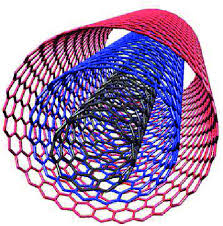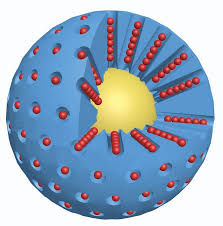How PL Molecular Photoluminescence Spectroscopy in Nanotubes (CNTs and CNTs) PhD Nano _ Microelectronics
Researcher and author: Dr. ( Afshin Rashid)
Note: In photoluminescence spectroscopy in nanotubes (CNTs and CNTs), external factors affecting the fluorescence intensity of growth defect, nanotube length, molecules in the environment, physical or chemical degradation and chemical performance. Interaction between guest molecules by covalent and non-covalent methods with host nanotubes can lead to intensification or inactivation of PL intensity.
PL spectroscopy provides good information about CNT semiconductor nanotubes and CNTs in the sample . This can be used to arrange the sample based on the structure or measure the selective production of a species of the resulting sample in a rapid manner. Of course , there are many external factors that reduce the accuracy of the data obtained, and more calculations and accurate calibration increase the accuracy of the work.
CNT and CNTS electrical conductivity measurements
Metal and semiconductor SWCNTs with electrical properties There are several differences in their conductivity measurements Reflect the will . In theory, metal nanotubes can pass an electric current density of 4 109 109 which is 1000 times more ACM-2 than metals such as copper, whereas metal unlike SWCNTs semiconductors has electrons having DOS at the surface and surface. Fermi is the chemical potential of electrons. At zero, this surface contains electrons, but in semiconductors electrons are placed in the energy gap, where There is no energy level allowed. Thus, electrons exist to stabilize the complex transport formed by increasing the reaction to Nanotube surface.
Metal swcnts are better able to stabilize the converter and therefore increase the reaction speed. Selective removal of semiconductor SWCNTs is related to cavity doping with hydrogen peroxide. If surfactant is used, the diameter of the hydrogen peroxide decomposition reaction increases with diameter because the SWCNTs in which the surfactant is placed react more strongly than the others. Oxidation of nanotubes with air can be compared with oxidation of nanotubes with hydrogen peroxide . Under air oxidation conditions , SWCNTs do not react With higher chiral angle and lower diameter faster. So you can angle and diameter of the SWCNT with low catch up .
A .
Similarly, the solubility of a solution indicates that the reaction rate depends on the diameter because the pyramidal or nonlinear reaction on the π orbit is a diameter-dependent process. While exposed to air, metal SWCNTs in the thin layer of carbon nanotubes can be selectively degraded in the presence of the semiconductor type . Nitronium ions have been reported to be selectively incorporated into low diameter metal SWCNTs Attack and they are amorphous carbon Turns out . Sulfonic acid binary mixtures are also used to dissolve SWCNTs by direct protonation . From there, proton chain geometry is sensitive, this selection method based on the diameter to allow it .
Conclusion :
Reaction with hydrogen gas and fluorine, with the introduction of SP3, transforms the electrical structure of hybridization metal nanotubes into a semiconductor. These reactions sometimes the walls of the nanotubes damage resulting layer structure of carbon or graphite, amorphous create them . Hydrogenation of single-walled nanotubes increases the nature SWCNT semiconductors are made at natural temperatures . Engraving plasma reaction or high temperature in the wall of metal nanotubes .
Researcher and author: Dr. ( Afshin Rashid)
PhD in Nano-Microelectronics





